|
The OP
Published on 2020-4-21 21:34
Only look at the author
This post is from Analogue and Mixed Signal
| ||
|
|
||
- 【Posts】Using a boost transistor to obtain power
- 【Posts】When using a transistor in the amplification area, which thermal resistance should be considered after considering the power?
- 【Posts】The analog ground/system ground GND and the LC boost power ground PGND are directly connected together, and the MCU digital ground DGND is not directly connected together.
- 【Posts】Could you please tell me how to check the maximum power of some boost chips?
- 【Posts】How to design a direct-play radio using s9018 and s9014 transistors?
- 【Posts】Ultrasonic drive boost problem
- 【Posts】Output problem of triode common emitter amplifier circuit
- 【Posts】The boost circuit is unstable, what is the reason?
- 【Download】Use IPHelper\'s API function GetAdaptersAddresses to obtain local network card information
- 【Download】Using NetBIOS\'s NetWkstaTransportEnum function to obtain the MAC address
- 【Download】Using stack overflow to gain control of remote machines
- 【Download】Get the CPU utilization of the local computer in the DOS environment
- 【Download】Design and application of boost transformer for high power photovoltaic inverter
- 【Download】12 W Non-Isolated, TRIAC Dimmable, High Power Factor, Buck-Boost LED Driver User Manual
- 【Download】5.76 W Non-Isolated, TRIAC Dimmable, High Power Factor, Buck-Boost LED Driver
- 【Download】7.75 W TRIAC Dimmable, High Efficiency, Non-Isolated Buck-Boost LED Driver with PFC (LYT3324D)
- 【Design】DER-412 - 12 W high power factor, non-isolated, buck-boost, triac dimmable LED driver
- 【Design】12V to 24V EG1164 high power boost
- 【Design】NCP1406V25GEVB: Monolithic Micropower PFM Boost DC-DC Converter Evaluation Board
- 【Design】NCP1406V15GEVB: Monolithic Micropower PFM Boost DC-DC Converter Evaluation Board
- 【Design】SH-004_High power boost module
- 【Design】SH-003_Low power boost module
- 【Circuits】A circuit for displaying peak values ??using a fluorescent ray triode display
- 【Circuits】The constant current source composed of two transistors can drive high power
- 【Circuits】Circuit diagram of high-power triode (Darlington tube) for output tube
- 【Circuits】0TL power amplifier with ordinary power tubes changed to triode connection method
- 【Circuits】Circuit diagram of a boost-start converter using MAX641
- 【Circuits】Micropower boost voltage stabilizing circuit
- 【Articles】How to obtain power using boost transistors
- 【Articles】How to get more power using boost transistor
- 【Articles】Two transistors designed boost circuit
- 【Articles】Use the PWM output function of the STM32 timer to directly obtain the PWM waveform
- 【Articles】How to use a multimeter to determine the three poles and type of a bipolar transistor
- 【Articles】How to use a multimeter to test transistors?
-
When using a transistor in the amplification area, which thermal resistance should be considered after considering the power?
Whenusingatransistorintheamplificationarea,whichthermalresistanceshouldbeconsideredafterconsideringthepowerHowmuchpowercanbeusedThethermalresistanceoftheloweroneissmall
-
Can the lower tube in the transistor pair structure have a smaller power?
ThisisacommonlyusedswitchdrivecircuitcomposedofPNPandNPNThroughcircuitanalysis,IfoundthattheQ2lowertubedoesnotactuallyneedstrongpowerIsmyanalysiscorrect?
-
Awards: Award Live | Next-generation magnetic sensing solutions: How XtremeSense TMR technology promotes efficient applications
Award-winninglivebroadcast|Next-generationmagneticsensingsolutions:HowXtremeSenseTMRtechnologypromotesefficientapplicationactivities~PrizeCollectionDate:Winnersmustcompletetheprizecollectionconfirmationaccordingtotheprizecollectionconfirmat ...
- Xiaomi's four-motor system can make a compass turn and turn on the spot. Is it difficult to implement the algorithm?
- Advanced Designer 25.0.2
- A novice asks for advice, how can a switching power supply achieve a regulated output without using a 431?
- MSP430F5438+DTH11 Example Code
- 【Qinheng RISC-V core CH582】Upgrade program via Bluetooth
- Several parameter issues of audio playback equipment
- MSP430 and Audio
EEWorld Datasheet Technical Support
-
Qualcomm launches its first RISC-V architecture programmable connectivity module QCC74xM, supporting Wi-Fi 6 and other protocols
On November 14, Qualcomm announced the launch of two connectivity modules, QCC74xM and QCC730M, f
-
It is reported that memory manufacturers are considering using flux-free bonding for HBM4 to further reduce the gap between layers
On November 14, according to Korean media ETNews, Samsung Electronics, SK Hynix, and Micron are a
-
ON Semiconductor CEO Appears at Munich Electronica Show and Launches Treo Platform
During Electronica, ON Semiconductor CEO Hassane El-Khoury was interviewed by Power Electronics N
- AMD launches second-generation Versal Premium series: FPGA industry's first to support CXL 3.1 and PCIe Gen 6
- SEMI: Global silicon wafer shipment area increased by 6.8% year-on-year and 5.9% month-on-month in 2024Q3
- TSMC's 5nm and 3nm supply reaches "100% utilization" showing its dominance in the market
- LG Display successfully develops world's first stretchable display that can be expanded by 50%
- Seizing the Opportunities in the Chinese Application Market: NI's Challenges and Answers
- New diaphragm-free solid-state lithium battery technology is launched: the distance between the positive and negative electrodes is less than 0.000001 meters
- Photoresist giant JSR Korea EUV MOR photoresist production base started construction, expected to be put into production in 2026
- Problems with STM32 and passive buzzer playing sound
- Embedded Tutorial_DSP Technology_DSP Experiment Box Operation Tutorial: 2-28 Building a Lightweight WEB Server Experiment
- OPA847IDBVR op amp domestic replacement
- AG32VF407 Test UART
- [Digi-Key Follow Me Issue 2] Chapter 1: Sharing on receiving the goods
- What model is this infrared receiver? Which model can be used instead? Thank you
- Selling brand new unopened ZYNQ 7Z020 FPGA core board
- The LORA module used in the lithium battery-powered water meter setting can save energy when 100 water meters are installed in one corridor.
- I would like to ask, when a port is set to RX0, is it necessary to set the input and output direction of this port?
- Why is this year so difficult? It’s even more difficult than during the pandemic. I’m 30 and facing unemployment. I’m so confused.
- Ask about the voltage regulator test question
- [Xiaohua HC32F448 Review] About Xiaohua Semiconductor's UART interrupt sending and PRINTF construction and redirection
- 【BIGTREETECH PI development board】 HDMI output test
- 【BIGTREETECH PI development board】+08. Audio test (zmj)
- [Xiaohua HC32F448 Review] +RTC electronic clock
- # STM32H7S78-DK Development Kit Three-week Review: Implementation and Analysis of Simple Sound Collection and Storage Using SD Card Reading and Writing
- [STM32H7R/S] Review⑧ nano edge ai studio training a model--Part 1
- [2024 DigiKey Creative Competition] A "fortune-telling" artifact based on Raspberry Pi
- New energy vehicle on-board AC slow charging and maintenance
- Embedded Engineer AI Challenge Camp (Advanced): Deploy InsightFace algorithm on RV1106 for real-time face recognition of multiple people
- I want to make a self-driving car. I saw one on Bilibili that costs 300 yuan. I am hesitant.
- [K230 Embedded AI Development Board Review] + License Plate Recognition and Billing Management
- How to deploy LVGL free graphics library on low-cost ARM platform, based on Allwinner T113-i
- Please help me analyze the reasons why EMI fails.
- ChatTTS is really awesome!
- 参会有好礼 | 2024 瑞萨电子MCU/MPU工业技术研讨会
- 深圳站:11月30日(周六)深圳湾万怡酒店
上海站:12月06日(周五)上海喜玛拉雅酒店
奖励设置:现金红包、螺丝刀套装或30元京东卡
- Littelfuse 新品赋能电子产品安全可靠并高效, 10+挑战等你探索!
- Littelfuse 应用赋能星球,覆盖了诸多应用痛点及解决办法,邀请工程师一起探索,解锁更多设计力!
- 了解英飞凌新品AIROC™ CYW5591x 无线MCU,答题赢好礼!
- 无线键盘鼠标套装、智能音箱、登山包、收纳包
- 下载资料赢好礼!看Vicor模块化电源解决方案如何推动创新
- 活动时间:即日起-2024年12月31日
如何参与:点击活动页内您想了解的模块,找到资料下载即可参与抽奖,活动结束后统一发奖!
- 有奖活动|英飞凌高密度双相电源模块为高性能运算平台而生
- 活动时间:即日起-12月15日
活动奖励:蓝牙音箱、氮化镓充电器套装、黑色小背包
- 本周精选下载推荐:电源管理基础Dummies
- 本周小编给大家带来一本超简单、超干货的电子书——《电源管理基础Dummies》!内容深入浅出,排版舒服简洁,分分钟能get到电源管理最核心的知识内容。
EEWorld
subscription
account

EEWorld
service
account

Automotive
development
circle

About Us Customer Service Contact Information Datasheet Sitemap LatestNews
- I want to get started with keras neural network, what should I do?
- I want to get started with rnn neural network, what should I do?
- For the basics of PCB repair, please give a learning outline
- For the introduction of microcontroller car, please give a learning outline
- Please give a learning outline for the operation of domestic SMT placement machines
- For the entry of home appliance PCB repair, please give a learning outline
- For an introduction to neural network control, please give a study outline
- What board should I buy when I am just getting started with FPGA?
- How to get started with neural networks
- In what fields are IoT systems currently used?


 Room 1530, Zhongguancun MOOC Times Building,
Block B, 18 Zhongguancun Street, Haidian District,
Beijing 100190, China
Tel:(010)82350740
Postcode:100190
Room 1530, Zhongguancun MOOC Times Building,
Block B, 18 Zhongguancun Street, Haidian District,
Beijing 100190, China
Tel:(010)82350740
Postcode:100190
 京公网安备 11010802033920号
京公网安备 11010802033920号


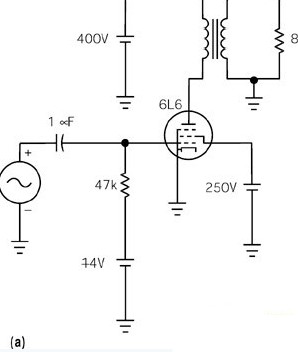
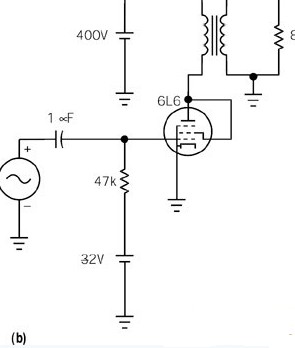
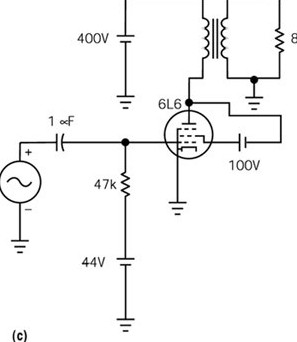
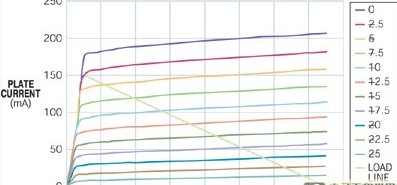

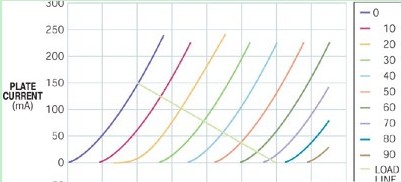

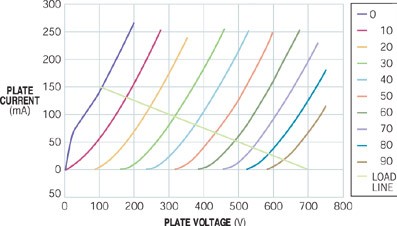
 提升卡
提升卡 变色卡
变色卡 千斤顶
千斤顶